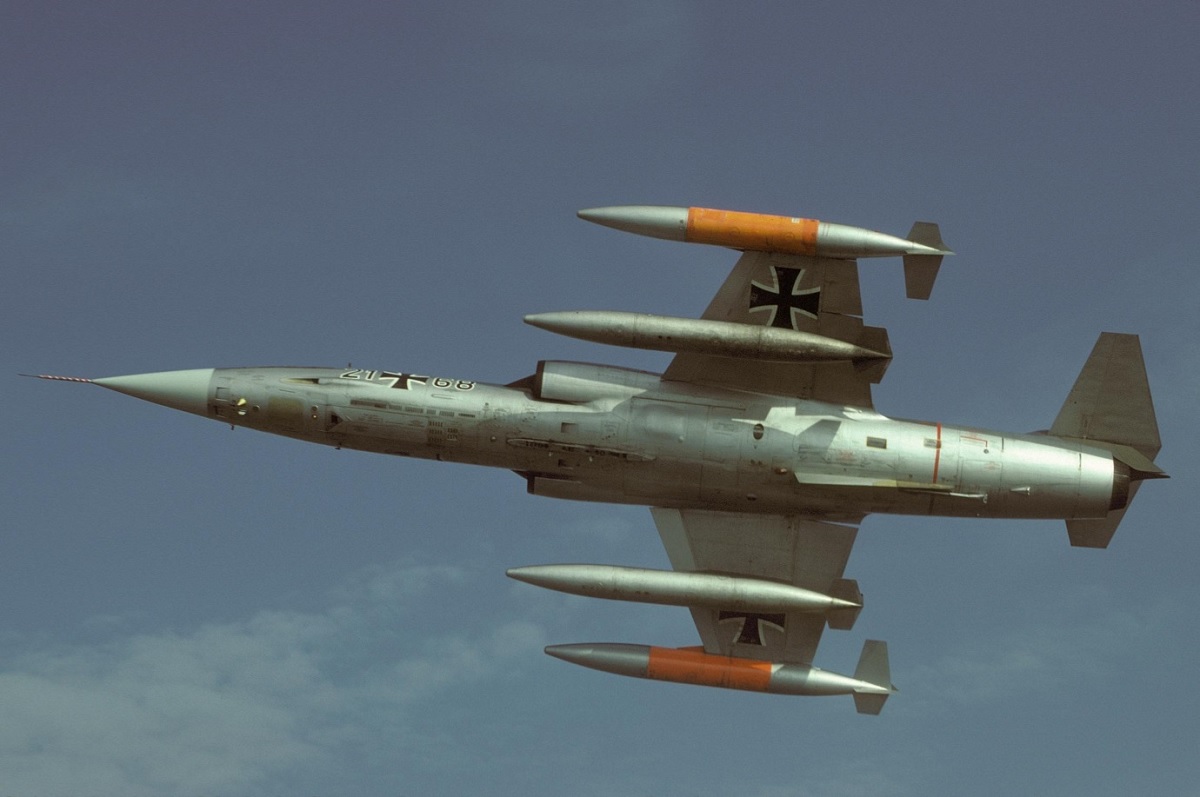“Along with the SR-71, the F-104 is Kelly Johnson’s greatest creation,” Ed Carney, U.S. Navy A-7 Corsair II pilot who flew the Starfighter with the West German Navy from ’79-’82
The first operational aircraft able to maintain speeds exceeding Mach 2 was the Lockheed F-104.
When contrasted solely to the old subsonic and “forgiving” jets, the Starfighter represented a significant advancement. However, the F-104 was outmatched by more conventional fighters when the air-to-air battles occurred at subsonic speeds because its ability to turn in this environment was crucial. Thus, it was crucial to prevent the Starfighter from slowing down below Mach 1 so that he could utilize his unparalleled speed and vertical ascent at the time.
Additionally, the F-104’s short-range and restricted weaponry carried worked against it because it was only temporarily in use by the U.S. Air Force (USAF).
Nevertheless, despite these flaws, the F-104’s pilots grew to love it, as was evident from multiple accounts provided to Ted Spitzmiller for his book Century Series: The USAF Quest for Air Supremacy, 1950–1960. As a member of the South Carolina Air National Guard, James C. Parham, Jr., piloted the Starfighter and recalled that “Although limited in range with two Sidewinders and no drop tanks, the F-104 was the quintessential high altitude interceptor. The pilots had a love affair with the F-104. The cockpit was simple, compact, and comfortable. The canopy was straightforward, light, and manually opened and closed. At Mach 2, it was quiet-and the long flexible fuselage rippled ever so gently.”
Early in its career, the F-104 was sold to foreign governments due to its unsuitability for USAF service. The Canadian Air Force went on to become one of the primary Starfighter users, and several American pilots had the opportunity to fly it during squadron exchanges, as was the case for Dudley Larsen, who transitioned from the F-4 Phantom to the CF-104.
The “Zipper” made a favorable impression on Larsen.: “It was an easy transition because the plane was very honest to fly-it talked to you. It had a good feeling when it settled in. The engines were the same as the F-4 (J79).” Due to its speed and size, the Starfighter excelled in the visible multi-bogey ACM (Air Combat Maneuvering) arena. On the other hand, if the pilot rotated more than 30 degrees, he became a target due to the F-104’s poor turning ability caused by its high wing weight. The CF-104 held its own against the F-4, according to Larsen, and the pilot’s skill made a significant difference.
Ed Carney, a U.S. Navy A-7 Corsair II pilot who flew the Starfighter in Germany for the West German Navy for three years from 1979 to 1982, was utterly fascinated with it, “Coming from the A-7E it was like transitioning to jets all over again. Crazy fast and light, and would outrace anything out there. Flying slow (defined as less than 450 kts) could be dicey if you tried to pull any G’s.” As Carney explains, as long as the fighting never slowed down, the jet could supercruise at sea level and maintain its maneuverability.
“It demanded a skilled pilot and rewarded him with amazing performance, but was the least forgiving airplane I have ever flown. On the deck, plugging in the burner would shove you from 450 to 750 knots so fast it was almost scary. We were always pulling it back to keep from exceeding a speed or temp limit.”

However, the F-104 was more than just a powerful fighter, in Carney’s opinion, since “Along with the SR-71, it is Kelly Johnson’s greatest creation.”
Photo by U.S. Air Force and Luftwaffe

